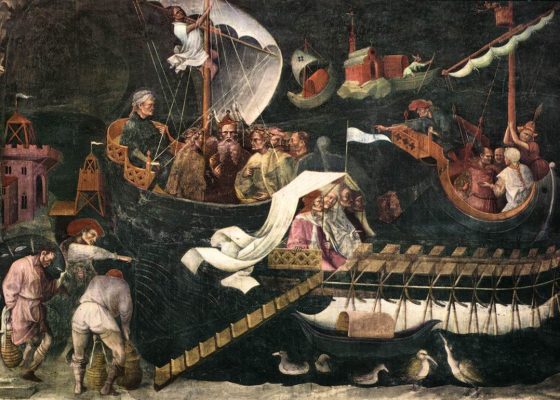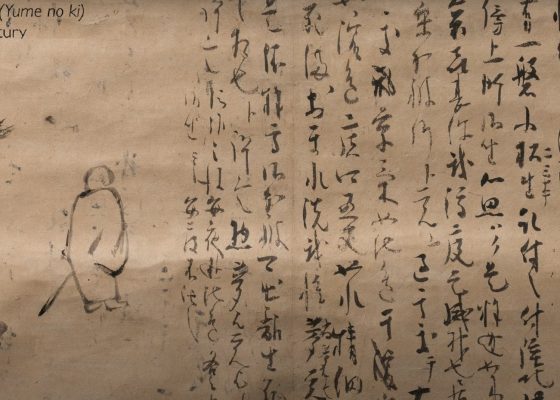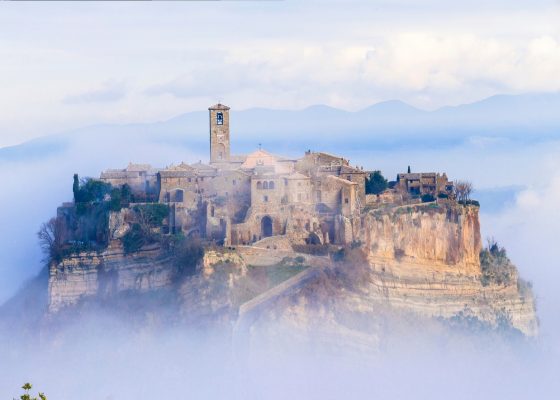By Reid Schram(Translation : Yuyu Chiang)
Throughout her life, Coco Chanel concealed the truth about her origin. She talked about an aunt from Auvernia that never existed and did not want to remember anything about her childhood – she was a child growing up in an orphanage.
As Axel Madsen tells us in “Coco Chanel” (Edicion Circe), she was the illegitimate daughter of vendors. She was 12 when her mother died and her father disappeared, leaving his daughters Julie, Gabrielle and Antoinette at the orphanage in Aubazine, and sons Alphonse and Lucien to a peasant family. Chanel has reinvented her history and did not want to ever remember the years at the orphanage. She built her legend surrounded in mystery and did not care that she was not telling the whole story.
At 21 she was already working in a haberdashery in Moulins: sewing in a workshop of clothes for men, for city officials. Next she worked in a café called La Rotonde, where she earned the nickname “la petite Coco”.
After a while, her life changed when she met Étienne Balsan, a rich racehorse breeder who later became her protector. Balsan had a big and beautiful house in Royallieu, located one hour from Paris. The house was a fortress with walls covered with ivy, with stables and horse tracks, and was surrounded by a park of oaks and chestnut woods close to Compiègne forest. Chanel was 22 years old when she moved there.
While the ladies who were watching the horseraces from Longchamp wore feathers and big hats, Coco appeared in a costume: trousers with a masculine jacket – something rare and strange for that time – and a straw hat. Chanel was the image of modernity in contrast to the decaying splendor of the period called “la belle époque”.
A Busy and Adventurous Life
She was an active woman and one day she asked Balsan to help her open a hat shop in Paris. While Balsan was still thinking about this idea, Coco fell in love with Arthur Capel, also known as “Boy”. They met at a fox hunt in the Pyrenees. Capel was English, the son of a tycoon who made his fortune thanks to coal mines. Coco left with Capel to Paris, leaving Balsan a note: “I’m going with Boy Capel. Forgive me but I love him.” Coco was able to open a hat store with Boy’s help, in rue Cambon No. 21, a street that in the next 80 years was associated with her name.
Chanel’s business was a success. She knew how to transform simple hats that she bought from Lafayette Gallery and then selling them as a unique piece. On one occasion the actress Gabrielle Dorziat wore Chanel’s hats in the drama “Bel Ami,” by Guy de Maupassant. The actress was dressed by the great Jacques Doucet and Chanel was very happy.
Several years have passed and Chanel’s creations were worn by Nora Gregor in “The Rules” by Renoir, by Delphine Seyrig in “Last year at Marienbad” by Resnais and other big Hollywood stars. With Boy’s help she began to enter the high society, including painters, writers and talented people.
When Coco was opening a clothing and knitted hats store in the summer of 1913 in Deauville, she was already in the magazine “Le Figaro”.
On July 15, 1915 Chanel opened a “fashion boutique” in Biarritz, relatively soon after the beginning of World War I in 1914, when clothes have had to adapt to war and women who were previously elegant, now tended the wounded, drove ambulances and used typewriters. Chanel had to adapt and respond to new needs.
Her works conquered the entire world and the fashion item that will remain iconic is the famous adorned jacket with its unique style.
Although she had many suitors, she preferred to work and gain fame: “Whenever I had to choose between the man I love and clothes, I ended up with the clothes,” comments Chanel.
She reappeared in Paris in 1954, having to adapt to that time, not losing her throne in Parisian fashion, rivaling with Yves Saint Laurent, Courreges and Paco Rabanne, with their innovative ideas. She believed in the first, despised the second for working with plastic, and she called Paco Rabanne “the metallic one” because he worked with metals. Of all creators, the only one she respected was Balenciaga.
When she died in 1971, at 88, in her apartment at the Ritz, she was preparing her collection for spring and had plans to launch new fragrances. Having reached the pinnacle of creation, the woman who revolutionized women’s fashion in the early decades of the twentieth century and brought into fashion the fine and thin attire and the color black, had reached “immortality”.
Chanel was innovative both in fashion and in the way she lived. Her creations are still alive in the fashion world.
Coco Chanel Famous Quotes
“Fashion is not something that exists in dresses only. Fashion is in the sky, in the street, fashion has to do with ideas, the way we live, what is happening.”
“In order to be irreplaceable one must always be different.”
“Dress shabbily and they remember the dress; dress impeccably and they remember the woman.”
“Simplicity is the keynote of all true elegance.”
“Some people think luxury is the opposite of poverty. It is not. It is the opposite of ‘vulgarity.'”






Cancel anytime


Using our website
You may use the The Middle Land website subject to the Terms and Conditions set out on this page. Visit this page regularly to check the latest Terms and Conditions. Access and use of this site constitutes your acceptance of the Terms and Conditions in-force at the time of use.
Intellectual property
Names, images and logos displayed on this site that identify The Middle Land are the intellectual property of New San Cai Inc. Copying any of this material is not permitted without prior written approval from the owner of the relevant intellectual property rights.
Requests for such approval should be directed to the competition committee.
Please provide details of your intended use of the relevant material and include your contact details including name, address, telephone number, fax number and email.
Linking policy
You do not have to ask permission to link directly to pages hosted on this website. However, we do not permit our pages to be loaded directly into frames on your website. Our pages must load into the user’s entire window.
The Middle Land is not responsible for the contents or reliability of any site to which it is hyperlinked and does not necessarily endorse the views expressed within them. Linking to or from this site should not be taken as endorsement of any kind. We cannot guarantee that these links will work all the time and have no control over the availability of the linked pages.
Submissions
All information, data, text, graphics or any other materials whatsoever uploaded or transmitted by you is your sole responsibility. This means that you are entirely responsible for all content you upload, post, email or otherwise transmit to the The Middle Land website.
Virus protection
We make every effort to check and test material at all stages of production. It is always recommended to run an anti-virus program on all material downloaded from the Internet. We cannot accept any responsibility for any loss, disruption or damage to your data or computer system, which may occur while using material derived from this website.
Disclaimer
The website is provided ‘as is’, without any representation or endorsement made, and without warranty of any kind whether express or implied.
Your use of any information or materials on this website is entirely at your own risk, for which we shall not be liable. It is your responsibility to ensure any products, services or information available through this website meet your specific requirements.
We do not warrant the operation of this site will be uninterrupted or error free, that defects will be corrected, or that this site or the server that makes it available are free of viruses or represent the full functionality, accuracy and reliability of the materials. In no event will we be liable for any loss or damage including, without limitation, loss of profits, indirect or consequential loss or damage, or any loss or damages whatsoever arising from the use, or loss of data, arising out of – or in connection with – the use of this website.
Last Updated: September 11, 2024
New San Cai Inc. (hereinafter “The Middle Land,” “we,” “us,” or “our”) owns and operates www.themiddleland.com, its affiliated websites and applications (our “Sites”), and provides related products, services, newsletters, and other offerings (together with the Sites, our “Services”) to art lovers and visitors around the world.
This Privacy Policy (the “Policy”) is intended to provide you with information on how we collect, use, and share your personal data. We process personal data from visitors of our Sites, users of our Services, readers or bloggers (collectively, “you” or “your”). Personal data is any information about you. This Policy also describes your choices regarding use, access, and correction of your personal information.
If after reading this Policy you have additional questions or would like further information, please email at middleland@protonmail.com.
PERSONAL DATA WE COLLECT AND HOW WE USE IT
We collect and process personal data only for lawful reasons, such as our legitimate business interests, your consent, or to fulfill our legal or contractual obligations.
Information You Provide to Us
Most of the information Join Talents collects is provided by you voluntarily while using our Services. We do not request highly sensitive data, such as health or medical information, racial or ethnic origin, political opinions, religious or philosophical beliefs, trade union membership, etc. and we ask that you refrain from sending us any such information.
Here are the types of personal data that you voluntarily provide to us:
As a registered users or customers, you may ask us to review or retrieve emails sent to your business. We will access these emails to provide these services for you.
We use the personal data you provide to us for the following business purposes:
Information Obtained from Third-Party Sources
We collect and publish biographical and other information about users, which we use to promote the articles and our bloggers who use our sites. If you provide personal information about others, or if others give us your information, we will only use that information for the specific reason for which it was provided.
Information We Collect by Automated Means
Log Files
The site uses your IP address to help diagnose server problems, and to administer our website. We use your IP addresses to analyze trends and gather broad demographic information for aggregate use.
Every time you access our Site, some data is temporarily stored and processed in a log file, such as your IP addresses, the browser types, the operating systems, the recalled page, or the date and time of the recall. This data is only evaluated for statistical purposes, such as to help us diagnose problems with our servers, to administer our sites, or to improve our Services.
Do Not Track
Your browser or device may include “Do Not Track” functionality. Our information collection and disclosure practices, and the choices that we provide to customers, will continue to operate as described in this Privacy Policy, whether or not a “Do Not Track” signal is received.
HOW WE SHARE YOUR INFORMATION
We may share your personal data with third parties only in the ways that are described in this Privacy Policy. We do not sell, rent, or lease your personal data to third parties, and We does not transfer your personal data to third parties for their direct marketing purposes.
We may share your personal data with third parties as follows:
There may be other instances where we share your personal data with third parties based on your consent.
HOW WE STORE AND SECURE YOUR INFORMATION
We retain your information for as long as your account is active or as needed to provide you Services. If you wish to cancel your account, please contact us middleland@protonmail.com. We will retain and use your personal data as necessary to comply with legal obligations, resolve disputes, and enforce our agreements.
All you and our data are stored in the server in the United States, we do not sales or transfer your personal data to the third party. All information you provide is stored on a secure server, and we generally accepted industry standards to protect the personal data we process both during transmission and once received.
YOUR RIGHTS/OPT OUT
You may correct, update, amend, delete/remove, or deactivate your account and personal data by making the change on your Blog on www.themiddleland.com or by emailing middleland@protonmail.com. We will respond to your request within a reasonable timeframe.
You may choose to stop receiving Join Talents newsletters or marketing emails at any time by following the unsubscribe instructions included in those communications, or you can email us at middleland@protonmail.com
LINKS TO OTHER WEBSITES
The Middle Land include links to other websites whose privacy practices may differ from that of ours. If you submit personal data to any of those sites, your information is governed by their privacy statements. We encourage you to carefully read the Privacy Policy of any website you visit.
NOTE TO PARENTS OR GUARDIANS
Our Services are not intended for use by children, and we do not knowingly or intentionally solicit data from or market to children under the age of 18. We reserve the right to delete the child’s information and the child’s registration on the Sites.
PRIVACY POLICY CHANGES
We may update this Privacy Policy to reflect changes to our personal data processing practices. If any material changes are made, we will notify you on the Sites prior to the change becoming effective. You are encouraged to periodically review this Policy.
HOW TO CONTACT US
If you have any questions about our Privacy Policy, please email middleland@protonmail.com
The Michelin brothers created the guide, which included information like maps, car mechanics listings, hotels and petrol stations across France to spur demand.
The guide began to award stars to fine dining restaurants in 1926.
At first, they offered just one star, the concept was expanded in 1931 to include one, two and three stars. One star establishments represent a “very good restaurant in its category”. Two honour “excellent cooking, worth a detour” and three reward “exceptional cuisine, worth a
Thank you for your participation,
please Log in or Sign up to Vote

123Sign in to your account